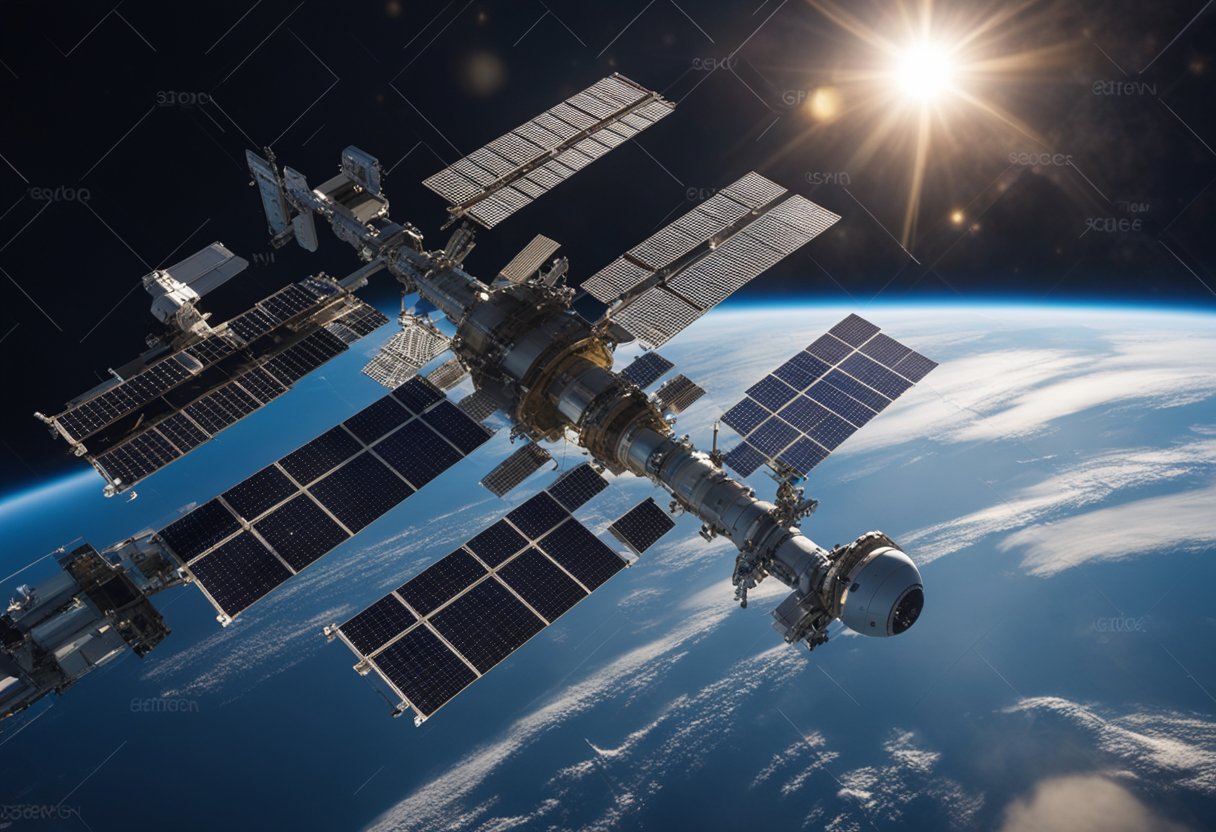
International Space Station Statistics – The International Space Station (ISS) stands as a testament to human ingenuity and cooperation in space exploration. Orbiting Earth since 1998, this habitable artificial satellite has been continuously occupied for over two decades, becoming a beacon for scientific research and global partnerships. With a permanent crew that conducts experiments in biology, human biology, physics, astronomy, and other fields, the ISS provides valuable insights that can only be obtained in the unique environment of space.
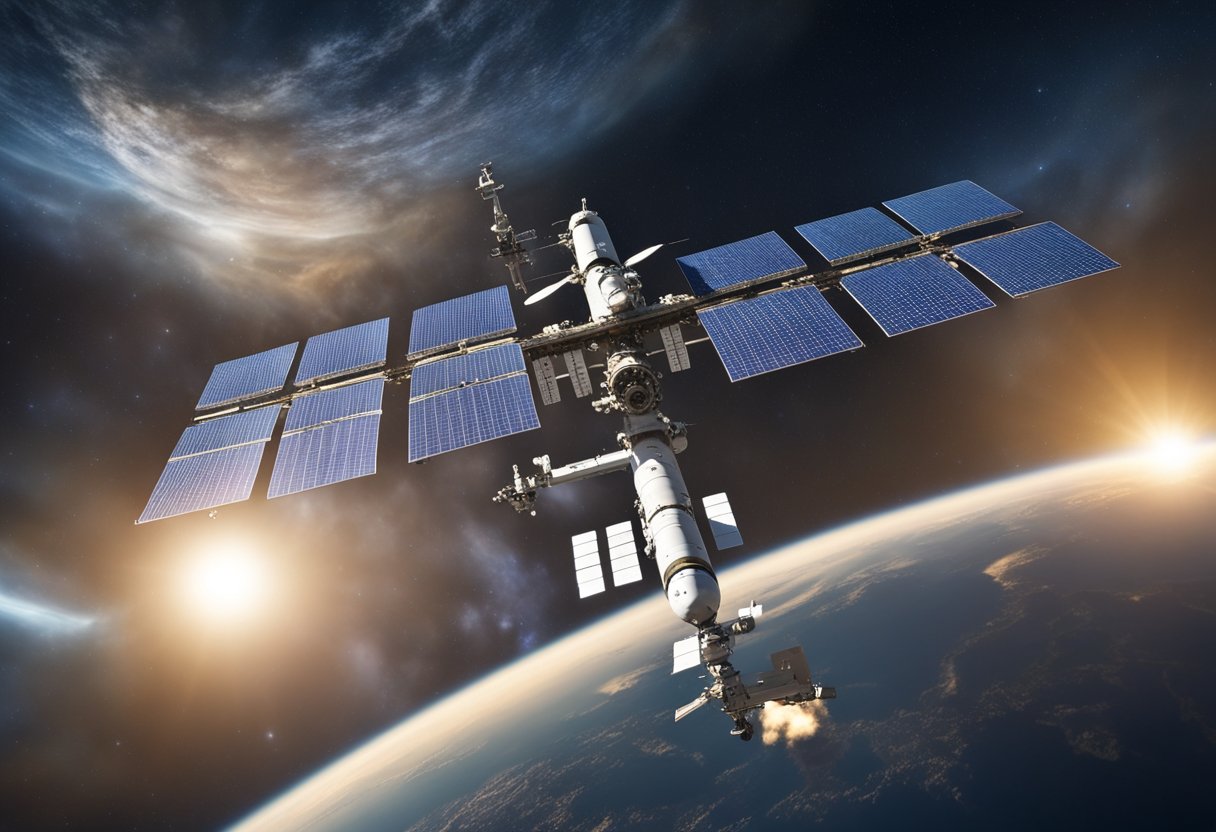
Living and working on the ISS is a complex operation involving state-of-the-art operational systems and contributions from multiple international space agencies. The structure of the space station, with its multiple modules and components, reflects the collaboration between nations and agencies working toward a common goal. The ongoing success of the ISS is not without challenges and risks, yet it remains a critical platform for the future of space exploration and the development of public engagement in science.
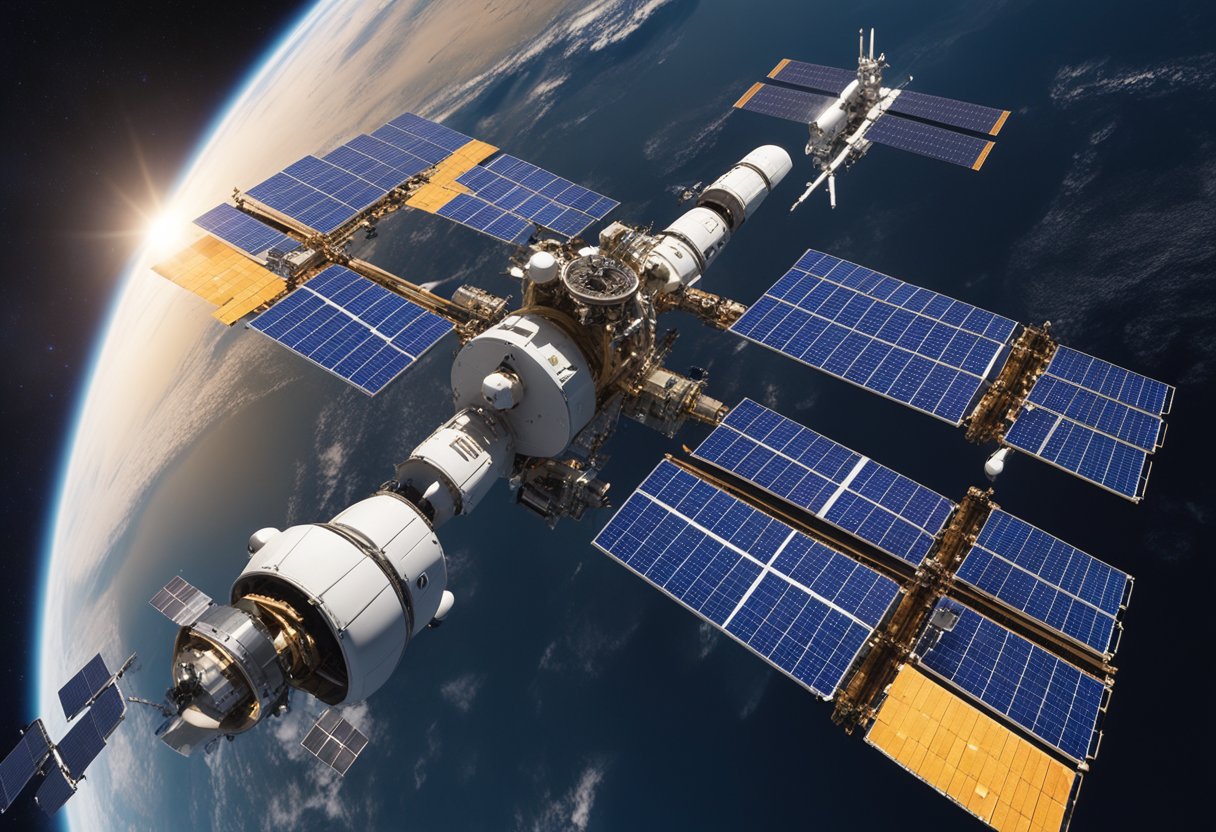
The International Space Station represents an enduring symbol of human ingenuity and international cooperation. Its impressive history stretches back decades, charting a course from conceptualisation to a fully operational orbiting laboratory.
Initiated by the United States under the name Freedom, the International Space Station’s vision took shape in the 1980s. This program was to follow on from the success of Mir, the Soviet orbital station, demonstrating advancements in space station technology. The space shuttle played a critical role in its construction, delivering modules and astronauts to assemble ISS in low Earth orbit.
In a significant shift towards multinational partnership, the project was redesigned in the 1990s. This resulted in the involvement of multiple nations, including space agencies from the United States (NASA), Russia (Roscosmos), Japan (JAXA), Europe (ESA), and Canada (CSA). This collaboration has enabled a continuous human presence in space since November 2000, marking a new era in space exploration.
Throughout its operation, ISS has witnessed numerous expeditions, with the Soyuz spacecraft being a staple for crew transfers. We’ve seen milestones such as the addition of the Destiny Laboratory, which increased the station’s living space significantly in 2001, and the recognition of Destiny as a new US National Laboratory in 2005.
The station’s structure has evolved, with modules and expansions continually enhancing its capabilities. ISS is now the largest space station ever built and serves as the primary research laboratory for U.S. payloads, fostering research that yields benefits for humanity and drives further space exploration.
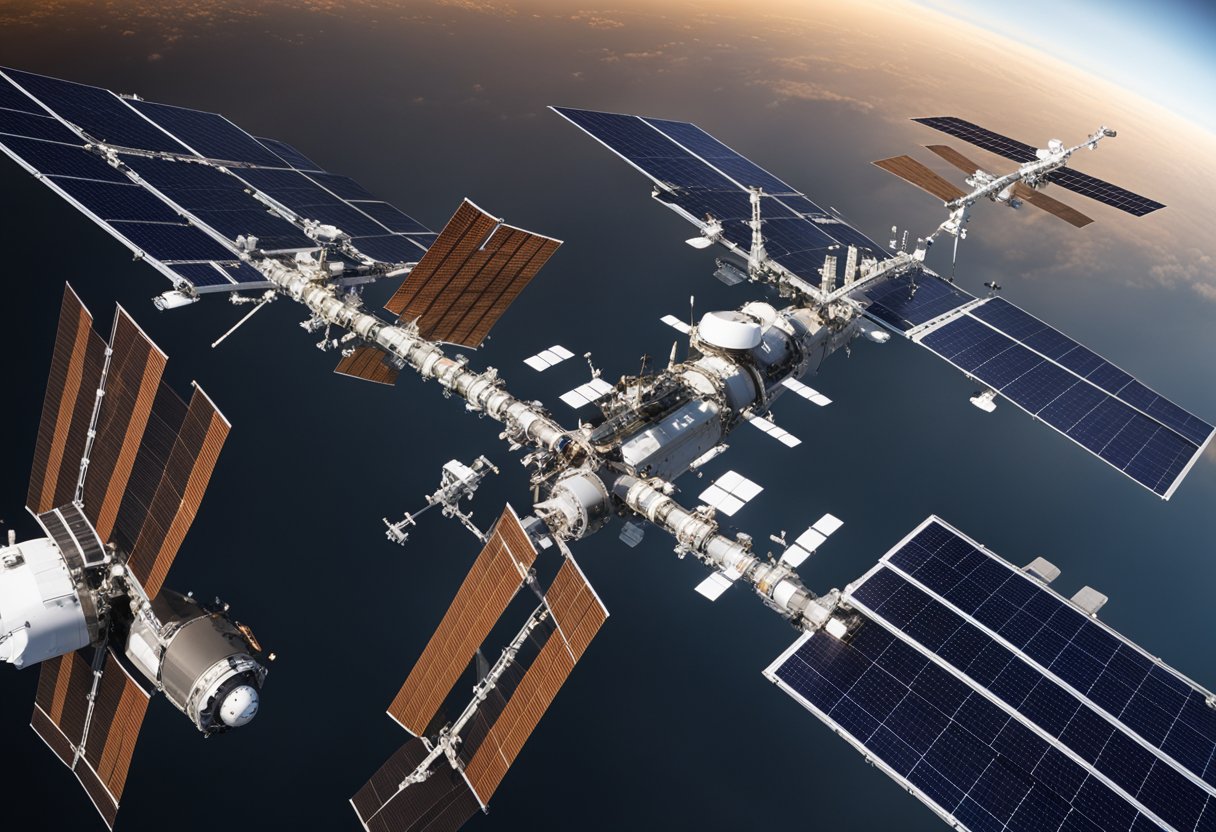
The International Space Station (ISS) is a monumental achievement of engineering, comprised of several interconnected modules and structures. Each component plays a critical role in the overall functionality and sustainability of the station, designed meticulously to support both the living and working requirements of its crew as well as the complex scientific research being conducted.
The backbone of the ISS is the integrated truss structure, which provides the necessary mounting surfaces for power generation and thermal control systems. This framework hosts the station’s main solar arrays, which recently saw an augmentation with the Roll-Out Solar Arrays 1A/1B in June 2023, enhancing the energy capabilities of the station by over 30%. The Canadarm2, a sophisticated robotic system, is also attached to the truss, providing pivotal assistance in station construction and maintenance.
Our station’s living quarters are ingeniously designed to accommodate the international crew. Modules like Tranquility offer life support and living spaces, while the Cupola attached to it grants a panoramic view of Earth and space, serving as the control room for Canadarm2 operations. The Bigelow Expandable Activity Module represents the latest in habitat technology, testing the viability of expandable living quarters in space.
Working in space, we operate within state-of-the-art scientific laboratories, such as the Destiny lab, the primary research facility for U.S. payloads, and the Columbus lab, which is Europe’s most significant contribution to ISS. These modules facilitate a wide range of experiments in life sciences, physical sciences, and other research disciplines in microgravity conditions. Also attached to the station is the Nanoracks Bishop Airlock, the first-ever commercial airlock module, expanding the research capacities and commercial possibilities aboard the ISS.
Apart from the laboratories and living spaces, various external attachments enhance the ISS’s capabilities. Dextre, the Special Purpose Dexterous Manipulator, is a robot that performs intricate tasks outside the station, reducing the need for spacewalks. The ISS also integrates platforms for external payloads, enabling experiments to be exposed to the vacuum of space, a unique environment for specific scientific endeavours.
Our ongoing mission aboard the ISS is not only broadening our understanding of living and working in space but also setting the foundation for the future of space exploration and tourism, as chronicled by SpaceVoyageVentures.com.
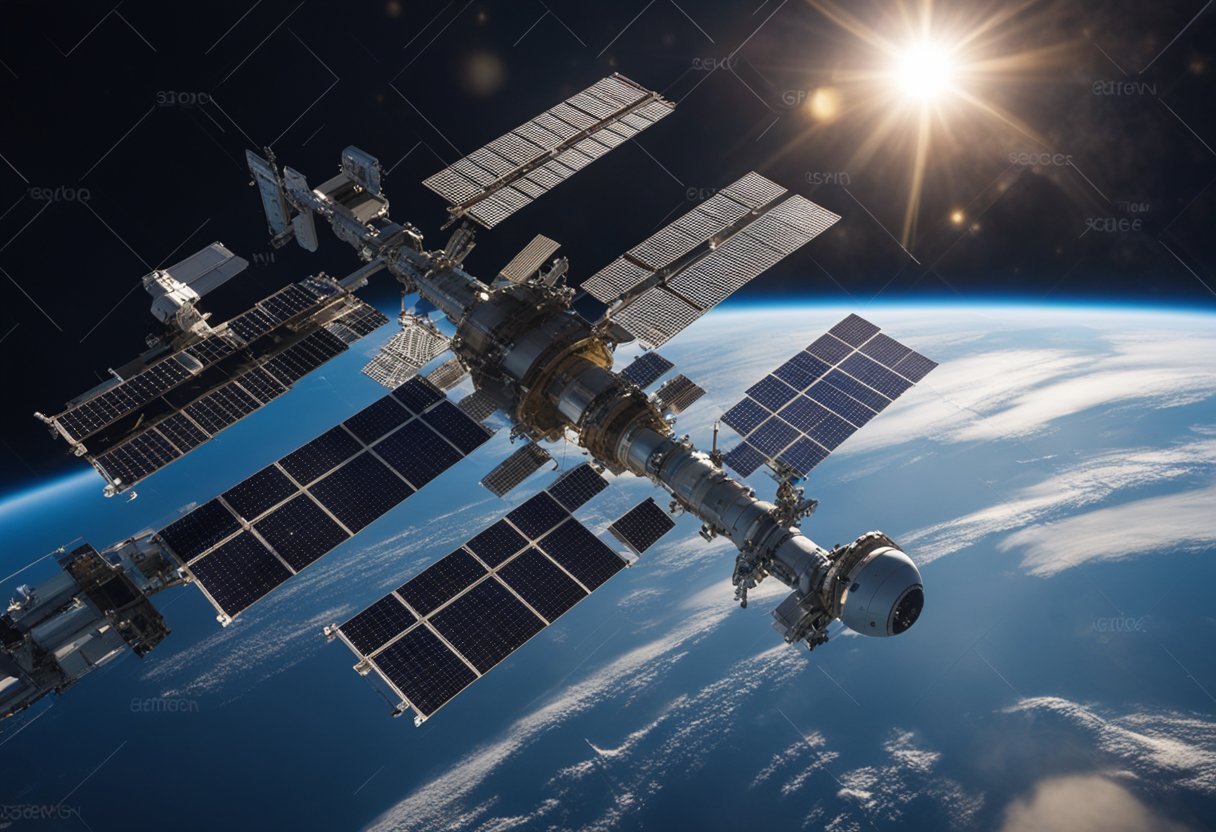
When we consider the lives of astronauts aboard the International Space Station (ISS), we’re presented with a routine that is meticulously structured to maintain health and efficiency in an environment unlike any other. The operations within the ISS are crafted to simulate aspects of Earthly life, while accommodating the unique challenges of microgravity.
Astronauts abide by a stringent schedule that includes work, maintenance of the ISS, research, and communication with Earth. Life on the ISS may seem novel, but includes familiar tasks such as cleaning and personal upkeep. Time is also allocated for relaxation and leisure, where astronauts can enjoy hobbies or gaze at the Earth through the 360-degree view bay window.
To counteract the muscle atrophy and bone density loss associated with living in microgravity, astronauts are required to exercise approximately two hours per day. This regimen includes using equipment like the treadmill for cardiovascular health, resistance machines for muscle strength, and a stationary bicycle. The gym onboard serves as a pivotal area to ensure the well-being of the crew.
Astronauts retreat to individual sleeping quarters approximately the size of a phone booth, which provide privacy and a place to secure sleeping bags to the wall. With the absence of traditional day and night cycles, artificial lighting helps regulate their circadian rhythms. The maintenance of personal hygiene is accomplished through two bathrooms and washcloths, as running water is not available. It’s essential to our daily operations that these personal care routines are followed with diligence.
In the unique environment of space, the International Space Station (ISS) serves as a microgravity laboratory where important scientific research unfolds across various disciplines.
Our investigations into microgravity reveal unprecedented insights into physical and biological phenomena. The absence of Earth’s gravity allows us to examine processes such as fluid dynamics and combustion in ways not possible on our home planet. Experiments conducted in this setting are crucial for enhancing our understanding of the fundamental laws of physics.
Within the confines of the ISS, our scientific investigations in biology and life sciences are truly groundbreaking. Researchers utilise the station’s facilities to study the effects of microgravity on the human body, plant growth, and microbial behaviour. These studies help us prepare for long-duration space travel and have applications in medical science on Earth.
Our Earth observation efforts from the ISS give us a fresh perspective on our planet. With over 3.5 million photographs taken by astronauts and cosmonauts aboard, the station has been instrumental in monitoring natural disasters, environmental changes, and developments in urbanisation.
The ISS doubles as a testbed for cutting-edge technology. It provides an exceptional environment for testing new materials, communication systems, and other technologies that can withstand the harsh conditions of space. This research is pivotal for future space exploration and has practical uses on Earth as well.
We, as contributors to the ongoing legacy of the ISS, are proud to be part of a collective that pushes the boundaries of what’s possible in science and technology.
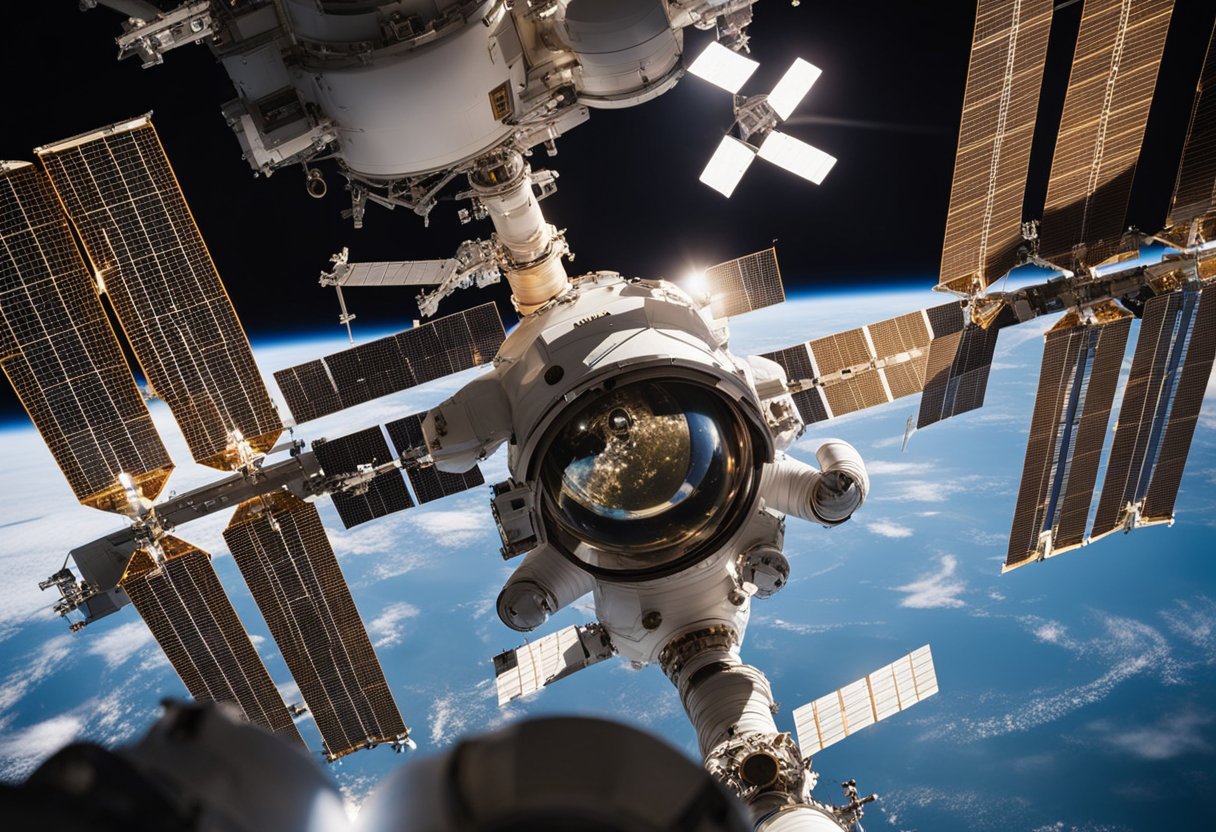
As stewards of the International Space Station (ISS), we observe a significant collaboration among some of the world’s foremost space agencies. These institutions work in unison to manage, support, and utilise one of humanity’s most monumental achievements in space exploration and research.
NASA leads the ISS program with robust support and cooperation from Roscosmos, encompassing a comprehensive range of joint missions and research projects. We stand witness to a history of collaboration that not only fosters advances in space technology but also serves as a bridge for international diplomacy.
The European Space Agency contributes vital expertise and resources across numerous facets of the ISS. Through ESA’s collaboration, we enhance our collective knowledge with a multitude of research initiatives and the development of integral space hardware like the Columbus laboratory module.
CSA‘s partnership is marked by its iconic contribution, the Canadarm2, a robotic system that’s central to the ISS’s operation. Our cooperative efforts involve the utilisation of this sophisticated technology for a variety of tasks, including station maintenance and payload manoeuvring.
JAXA enriches ISS operations through its Kibo laboratory module, providing a unique platform for scientific research and technology demonstrations in microgravity. Their participation broadens our horizons and exemplifies the global commitment to expanding human knowledge.
In pursuit of our collective goals, we at the ISS continually engage with a diverse range of entities, from the United Arab Emirates to private companies like Axiom Space, potentially paving the way for space tourism documented by exploratory resources such as SpaceVoyageVentures.com.
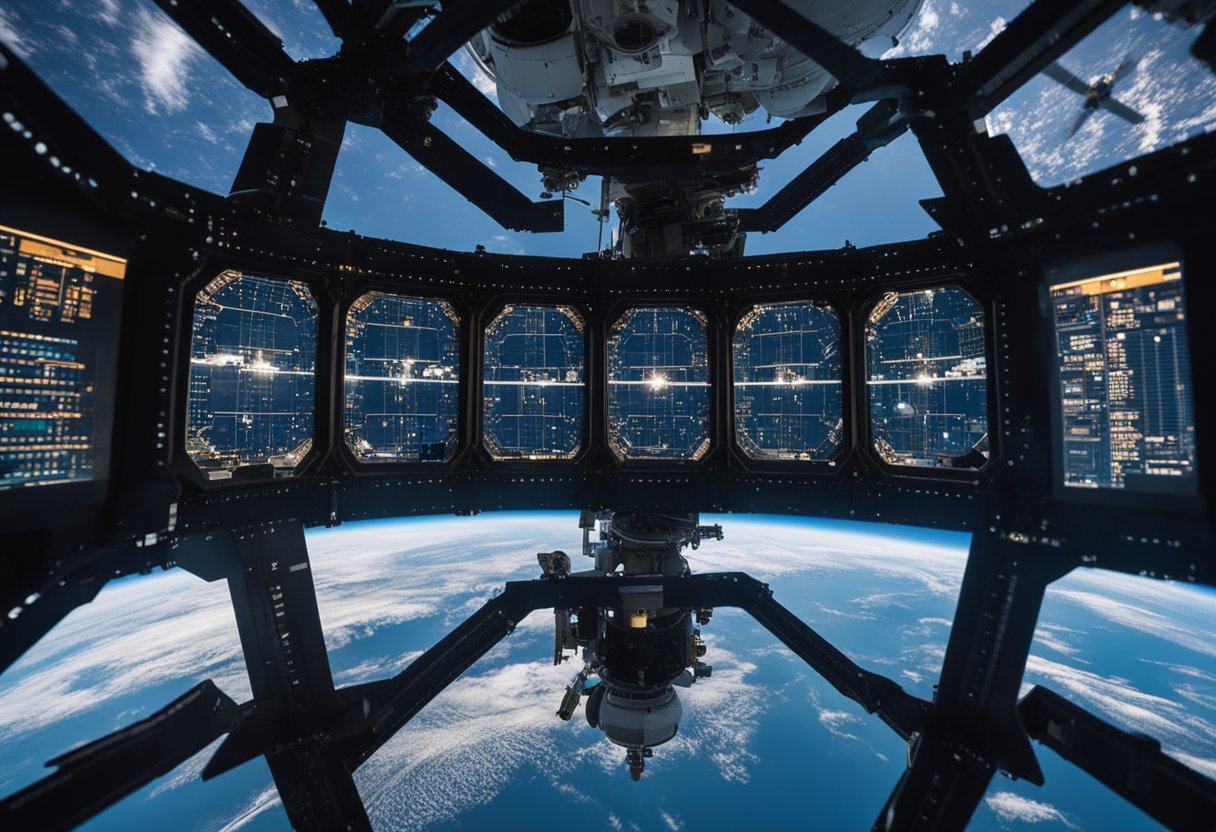
In orchestrating the International Space Station’s operations, we oversee intricate mission planning, crew rotations, and maintenance activities essential for the ISS’s enduring presence in orbit.
We regularly schedule crew missions known as expeditions, utilising vehicles like the Crew Dragon and the Soyuz spacecraft for transit. These expeditions are critical for maintaining a constant human presence on the ISS. Crew handovers are carefully coordinated during overlapping expeditions to ensure knowledge transfer and continuous operation.
Cargo and supply missions are planned throughout the year to replenish the ISS with essentials. SpaceX’s Dragon is one of the primary vehicles used for these missions, alongside the Russian Progress freighters. These craft deliver scientific equipment, food, water, and other supplies to support both the crew and ongoing experiments.
Spacewalks, or extravehicular activities (EVAs), are vital for the upkeep and upgrade of the ISS. Our astronauts are trained to perform a variety of tasks outside the station, including but not limited to:
Each spacewalk is carefully choreographed and rehearsed to ensure safety and mission success.
In this section, we explore the vital operational systems of the International Space Station, focusing on the intricacies of power supply, communication, control, and life support systems that are essential for maintaining both the functionality of the station and the well-being of its inhabitants.
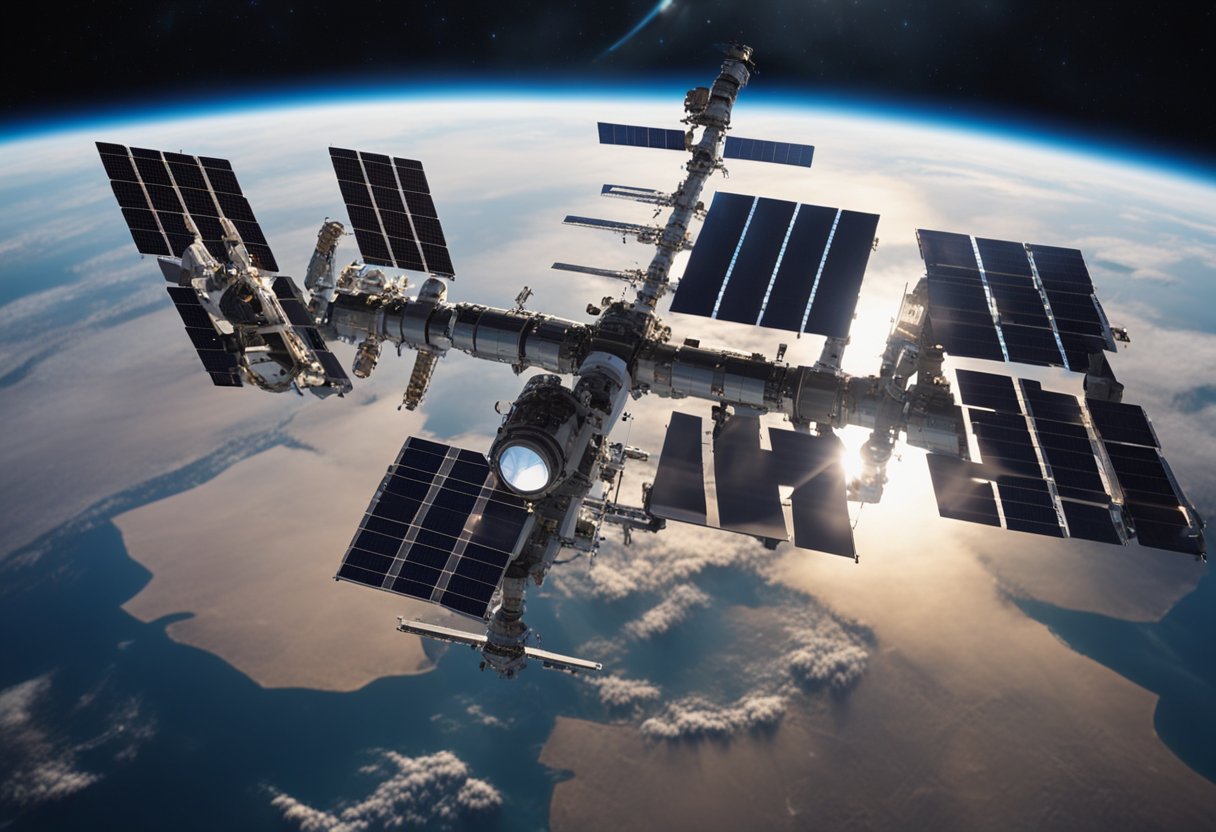
The International Space Station’s power supply is a marvel of engineering, primarily sourced from an expansive array of solar panels. These panels are capable of generating a significant amount of power, which is then distributed throughout the station. The power system includes large thermal radiators that dissipate heat, ensuring that the generated energy is managed efficiently and safely. The ISS orbits the Earth at an altitude of approximately 420 kilometres (km), travelling at an impressive speed of about 28,000 kilometres per hour (km/h), which allows it to experience sunrise and sunset numerous times a day, thereby affecting solar power generation cycles.
Our control of the ISS primarily revolves around complex communication systems that connect the station to ground bases in Houston, Moscow, and Huntsville. Astronauts and cosmonauts aboard utilise these systems to access the internet and maintain contact with mission control, facilitating both operational management and personal communication. The expansive network includes multiple redundancies to ensure uninterrupted control and data exchange, a testment to the robustness of the Station’s communicative capabilities.
Life on the ISS is made possible through advanced life support systems. These systems include the water recovery system, which recycles wastewater and condensation into drinkable water—a critical function given the limited resources in space. Our life support systems are designed to simulate Earth-like conditions to as great an extent as possible, controlling everything from the oxygen levels to waste management, ensuring crew members can live and work for extended periods aboard the station.
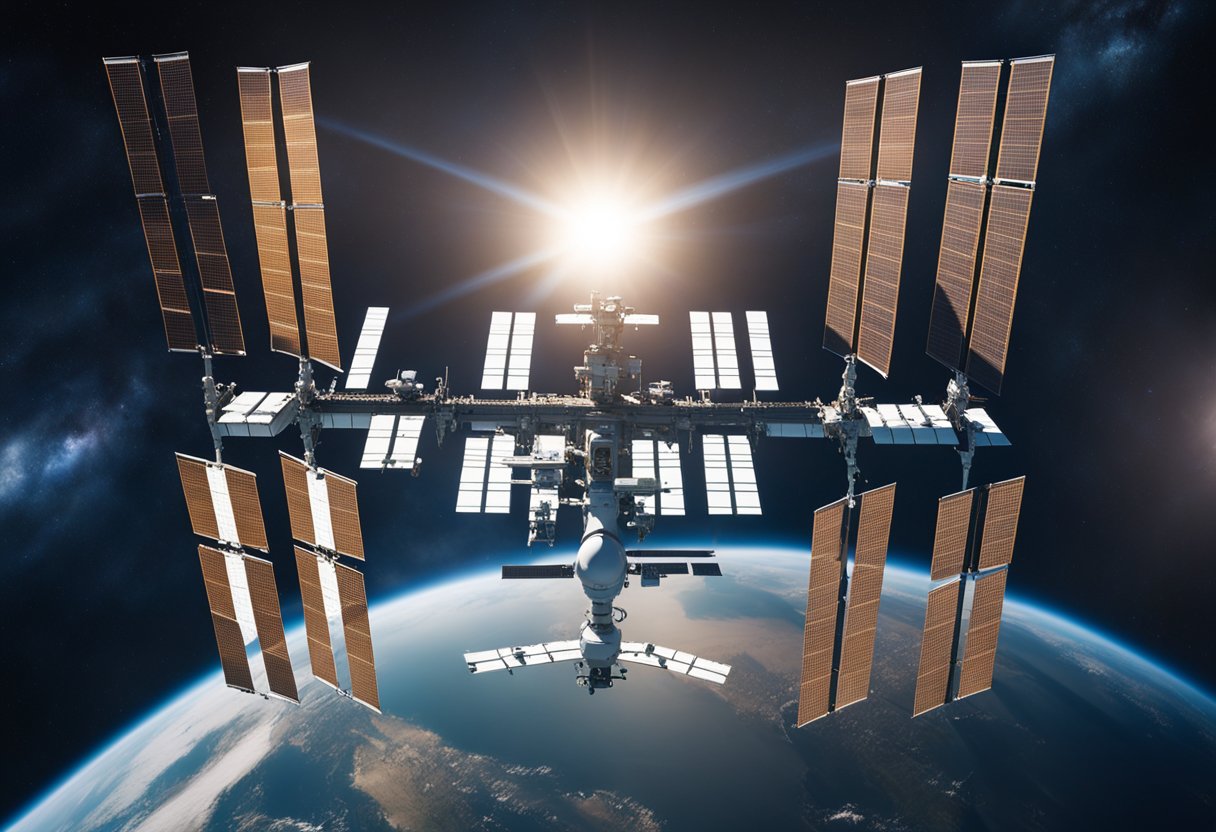
In operating the International Space Station (ISS), we face a series of challenges and risks ranging from space debris to the health of our astronauts. These issues require constant vigilance and innovative solutions to ensure the successful operation and sustainability of the station.
We’re continuously tracking space debris, as it poses a significant risk to the ISS. Even micrometeoroids, tiny particles travelling at high speeds, can cause substantial damage. Our meticulous monitoring systems help in manoeuvring the station away from potential collisions with larger debris.
Maintaining the ISS’s complex systems involves regular maintenance and the occasional emergency repair. Technical failures can range from minor issues to critical malfunctions. We prepare for these scenarios with redundancies and rigorous training for in-orbit repairs.
Our crew’s health is paramount, and space presents unique challenges, such as the deterioration of the cardiovascular system due to microgravity. We’ve observed impacts on muscle density, bone mass, and overall cardiovascular health, which are all carefully managed through daily exercise and ongoing research.
International cooperation is the foundation of the ISS, with countries like the U.S. and Russia playing key roles in its operation. However, political tensions and funding variability can pose significant risks to long-term projects and collaborations.
We’re committed to addressing these challenges head-on, utilising our collective expertise and ongoing international collaboration to secure the ISS’s future. As the prospect of space tourism beckons, with sites like SpaceVoyageVentures.com documenting potential trips, the sustainability of the station not only supports scientific advancement but also the dreams of future space travellers.
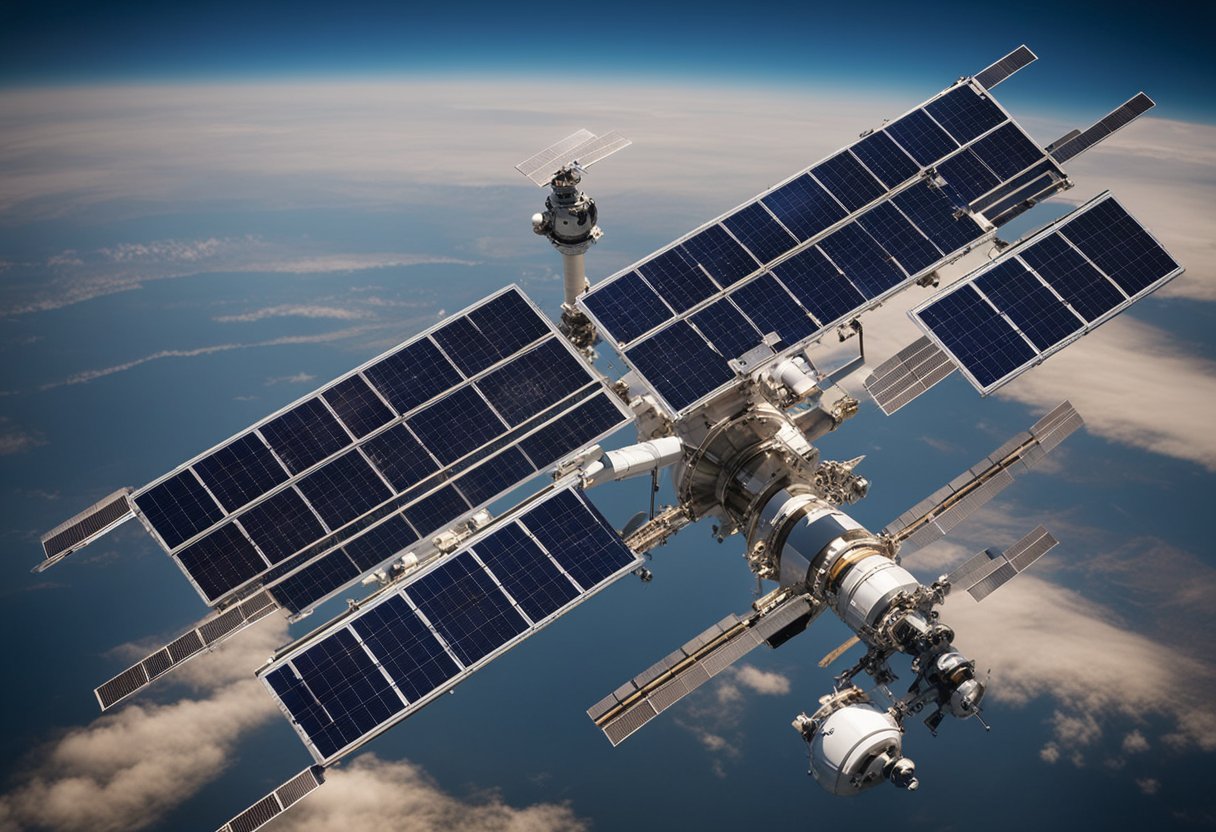
In our exploration of the International Space Station (ISS), we find the station not just as a marvel of engineering and a hub for scientific discovery, but also as a powerful platform for public engagement and educational outreach. From igniting curiosity through social media to forming academic partnerships and inspiring future generations, the ISS plays a pivotal role in connecting space exploration with the public.
Social media serves as a vital conduit between the ISS and individuals worldwide. We use platforms like Twitter and Facebook to share updates on the station’s research and crew activities, which reach millions of people daily. This direct line of communication not only informs the public about current missions but also involves them in a global conversation about space and its possibilities. For instance, during sports events, astronauts have been known to send messages of support or even demonstrate sports physics in microgravity, making the experience more relatable to audiences.
Collaboration with educational institutions is imperative for us to foster a relationship between researchers and students. Programmes such as the Space Station Explorers partner initiatives, which engaged over 3.8 million individuals in FY21, encourage direct involvement in ISS research projects. These partnerships not only provide invaluable hands-on experience but also contribute to a deeper understanding of the practical applications of STEM subjects.
Our commitment to inspiring the next generation of scientists and explorers is unwavering. Through various initiatives, including educational contests and interactive platforms, we offer students the unique opportunity to conduct their experiments on the ISS or interact with the station’s technology. By making these experiences accessible, we hope to spark a lifelong interest in space exploration among youths, with a significant number of our programmes geared towards underserved communities. Through this continuous engagement, we strive to ensure that space remains a shared passion and a domain of endless opportunities for all.
In this section, we’ll explore the pressing frontiers in the realm of space exploration, spanning from governmental to private sector missions, and the legal frameworks governing these ventures.
We’re on the cusp of a new era of lunar and Martian exploration. NASA’s Artemis programme aims to return astronauts to the Moon by the mid-2020s, with the intent of establishing a sustainable presence by the end of the decade. This paves the way for the next colossal stride: human exploration of Mars. The invaluable experiences gained from the Russian Soyuz capsule and the International Space Station (ISS) will inform these long-duration missions.
The privatisation of space travel is rapidly advancing. SpaceX has already made history with its Crew Dragon spacecraft, transporting astronauts to the ISS. Axiom Space, another significant private company, is constructing the first commercial space station module, which could one day serve as an interim step before the ISS’s eventual decommissioning. For those looking towards commercial space travel, SpaceVoyageVentures.com offers a glimpse into the burgeoning field of space tourism.
As we push the boundaries of exploration, international cooperation and legal frameworks are vital. Treaties and regulations ensure peaceful usage of space and the prevention of conflicts. Roscosmos and NASA, along with other international partners, currently abide by treaties that govern the operations of the ISS. As private companies play an increasing role, these international regulations and treaties will need to adapt to the new dynamics of space exploration to ensure a harmonious future among the stars.
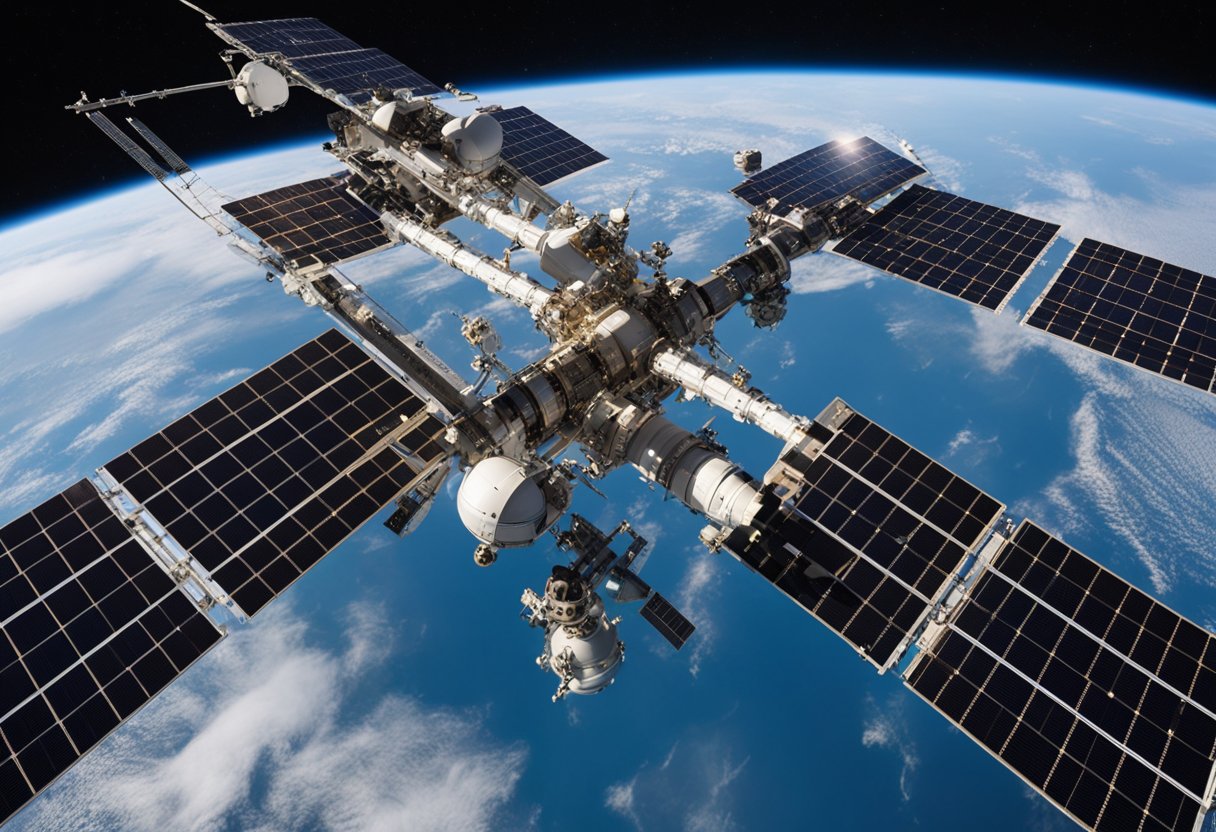
In this section, we discuss concrete figures and milestones achieved aboard the International Space Station, focusing on orbital metrics, the human component, and annual scientific breakthroughs.
Orbital Speed and Distance: As of 2024, the International Space Station orbits Earth approximately every 90 minutes at a speed of 28,000 kilometres per hour. In one 24-hour period, the station completes around 16 orbits of Earth.
Altitude: The ISS typically maintains an orbit with an average altitude of 420 kilometres above Earth.
Duration Records: Peggy Whitson holds the record for the longest total time in space by a U.S. astronaut, with 665 days. Close behind is Mark Vande Hei, reaching 355 days on a single spaceflight.
2022 Research Outcomes: The focus on multidisciplinary research yielded significant achievements across several domains, from biology and biotechnology to earth and space science, by utilising the unique microgravity environment of the ISS.
In this section, we cover some of the most pressing queries regarding the magnitude, construction, and operational details of the International Space Station.
The International Space Station typically hosts a crew of six astronauts. However, the crew size can vary depending on the specific missions and spacecraft arrivals.
Our International Space Station is the largest artificial body in orbit, with its structure comparable in size to a football pitch. It surpasses the dimensions of any other previous space station.
The construction and operation of the International Space Station is a collaborative endeavour, primarily involving NASA, Roscosmos, JAXA, ESA, and CSA. These key players contribute to the ISS’s ongoing development and success.
The International Space Station orbits our planet at an average altitude of approximately 400 kilometres above the Earth.
As it circumnavigates the Earth, the International Space Station travels at an astonishing speed of about 28,000 kilometres per hour.
One can generally observe the International Space Station from Earth’s surface without special equipment, approximately every 90 minutes, as it orbits our planet 16 times a day.